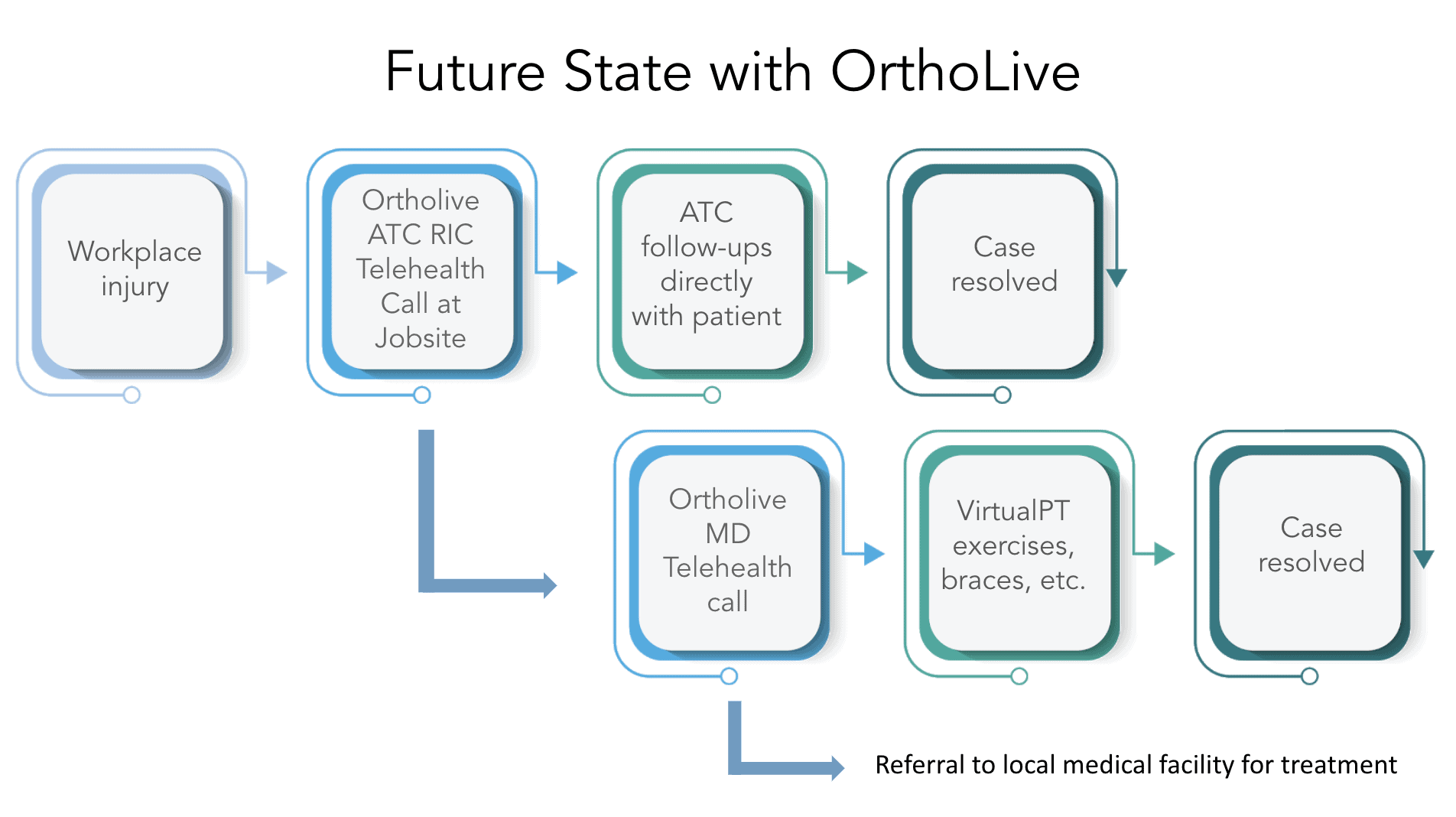 Employers are fed up with the high cost of workers’ compensation. Workers are frustrated by the time it takes to receive treatment at an ER or from a specialist. Fortunately, today, there is a better, more cost-effective way to handle on-the-job injuries.
Employers are fed up with the high cost of workers’ compensation. Workers are frustrated by the time it takes to receive treatment at an ER or from a specialist. Fortunately, today, there is a better, more cost-effective way to handle on-the-job injuries.
If you’re worried about the high costs of on-the-job injuries, telemedicine remote injury care can help your “industrial athletes” get back to work quickly while cutting your costs substantially.
These insurance programs in their current form, which are required in most states, cover about 140 million American workers and cost employers $95 billion annually. The goal is a good one: protect employers and their workers in the event of an on-the-job injury, but most employers will tell you workers’ compensation is expensive with workflows that are unwieldy and inefficient.
In 2017 there were 4.5 million work-related medically-consulted injuries that cost employers $161.5 billion in the United States. It should be noted that these costs were in addition to the actual costs of the workers’ compensation insurance premiums.
So what is remote injury care and how can it benefit the “industrial athlete” at job sites throughout the United States?
Workers’ Compensation and Your “Industrial Athlete”
In the past decade, the term “industrial athlete” has grown in popularity. The concept stems from the understanding that our industrial laborers ply their craft by using not only their knowledge and skills but also their physical strength and endurance to complete tasks. These workers make a big impact in many industries, from construction, agriculture, warehousing, and manufacturing, to oil and gas, and forestry. But because so many workers face orthopedic repetition injuries, even typing as part of your job can make you an industrial athlete subject to the rigors of your role.
With the realization of the physical demands of these roles also comes the recognition that these trades are far more prone to injury than the typical office worker. With the risk of injury in these fields comes the need for a paradigm shift for treating on-the-job incidents in a way that is more cost effective than the currently accepted best practice. This cultural and workflow evolution requires a new approach to managing on-the-job safety incidents in a more effective way to cut costs and get employees back to work fast.
What Happens During a Workplace Injury Incident?
 Today, when a workplace injury occurs, the injured worker along with the Health, Safety, and Environmental (HSE) Manager usually leaves work to go to the ER or urgent care. This could take hours and results in an immediate OSHA-recordable injury that results in enormous costs to the business.
Today, when a workplace injury occurs, the injured worker along with the Health, Safety, and Environmental (HSE) Manager usually leaves work to go to the ER or urgent care. This could take hours and results in an immediate OSHA-recordable injury that results in enormous costs to the business.
When a workplace injury occurs, the employer should have two primary goals:
- Getting the employee back on the job as quickly as possible.
- Providing the best care possible to each injured worker.
- Treating injuries so that they are not OSHA-recordable, if at all possible.
An OSHA-recordable injury is one that requires days away from work; the initial clinical triage is not recordable, but a trip to an ER for x-rays or a written prescription, is.
According to OSHA, a recordable event includes, “Death, days away from work, restricted work, or transfer to another job, medical treatment beyond first aid, or loss of consciousness.”
Any injuries that require an ER visit qualify as “medical treatment beyond first aid.” This can lead to fines that are a huge financial burden for employers. But today, the leading causes of work-related injuries are:
- Overexertion
- Slips and falls
- And contact injuries from equipment or objects
It should be noted that the majority of these incidents commonly result in musculoskeletal injuries to the back, knees, and shoulders. The problem is that many of these non-life-threatening incidents cannot be triaged immediately as most employers do not keep an on-site clinician available 24/7/365 to cover all workers all the time. Without the resources to assess the injury, the end result is that 84% of these incidents result in time off work. Typically, even a minor incident may lead to an ER trip. Once there, a specialist referral could take even more time. In addition to the OSHA-recordable event, there are medical care costs and reduced productivity.
But what if there was a way to provide an immediate on-site triage to your injured worker? What if that triage could eliminate the costs of a recordable OSHA event in many cases?
The Telemedicine Remote Injury Care Program at OrthoLive offers businesses a way to do all this—and more.

Remote Injury Care with OrthoLive
Just like any athlete, your industrial athlete can benefit from having 24/7/365 access to an athletic trainer that can diagnose and treat their injuries during a virtual telemedicine visit. Instead of traveling to urgent care or an ER, your on-site HSE Manager can dial up an OrthoLive athletic trainer on their mobile phone, laptop, or tablet, effectively bringing the healthcare provider to the injured worker wherever they are; including at the site of the injury incident – providing near immediate care while avoiding an OSHA recordable event.


While the traditional response to an on-site injury, no matter the severity, was a trip to the ER, telemedicine allows a qualified clinician a way to diagnose whether additional care beyond first-aid is needed. Our clients have documented substantial savings by eliminating unnecessary trips to the ER, reducing reportable OSHA events, and cutting unnecessary time off work to travel to a distant care facility.
The Telemedicine Remote Injury Care Program at OrthoLive offers big benefits:
- Immediate triage of a workplace injury at any time
- Instant assessment without travel to an ER or urgent care
- Easy access to care provider via any digital device
- Better recovery outcomes for injured workers
- Our clients report a 75-80% reduction in injury costs
- OSHA recordable events decline
- Employee morale improves
- Productivity improves
Having always-on access to an athletic trainer via telehealth is a tremendous opportunity for employers to improve on-the-job healthcare for their workers while still reducing their healthcare costs. The immediate ability to bring a care provider to a patient via a telemedicine visit will eliminate unnecessary trips to the ER.
Should the injury require additional care beyond first-aid, our service also offers:
- Case management throughout assessment, treatment, and rehabilitation
- A local network of orthopedic surgeons for specialty care without long wait times
- Physical therapist availability for all follow-up treatments
Click here to find out how one national eCommerce retailer cut their workers’ compensation claims by 75% with a projected savings of more than $300,000 annually with remote injury care.



